An Oxford college library is a wonderful place to work in but has lots of potential for distracting staff away from library housekeeping. Not only are the books an ever present source of temptation but the buildings and fittings themselves constantly vie to catch your attention – from the acanthus leaves carved into the top of oak bookcases (James Wyatt 1791-4), the ceiling bosses (also late C18th and including simple circlets of leaves, a green man and an ourobouros – the coiled self-devouring serpent ) to the bits of medieval stained glass which, in Balliol Library, include the earliest representation of the coat of arms now universally recognised as that of the university itself.
The Arts and Crafts style oak chairs, a variant on the Windsor chair, were also a striking presence. Over the years broken spindles and legs have been repaired by the college workshop and until recently there always seemed to be enough spare parts. Over the last year, however, it had become increasingly apparent that new chairs were needed … and imminently.
A supplier and style of chairs were chosen – an arcane process done behind closed doors and probably involving smoke, mirrors, hot towels, and baton changes as the Librarian, rather like Dr Who, went through several manifestations (Librarian/Acting Librarian/Librarian/Acting Librarian covering for the Librarian on maternity leave – all within 6 months). Surprisingly quickly a prototype appeared and took its place in the library accompanied by a box for comments.
At first, armed with my dislike of the idea of change, I thought there was too much of the G-Plan domestic dining room chair of the 60s about them but closer inspection revealed they were sturdy with well-made joints, very generously sized, had comfortable seats and back rests in well padded leather. They were quite – but not too – heavy, so no rocking back on the 2 back legs with these chairs.
I dreaded the changeover. I had loved the old style chairs which brought with them a whiff of the country house style of the early 1930s. On the day of the swop over, those of us not involved in the logistics of chair moving kept to our lower library lair and out of the way as an enfilade of the old chairs were marched through the middle of our office on their way to temporary storage in the annexe.
The new chairs came in 3 lots and after the first batch were in place in the Old Library (1791 but in part going back to early C15) I emerged with some trepidation and a slightly heavy heart to survey the new character of the library. But the funny thing was, although my critical faculties were poised for attack and my aesthetic sensibilities were ready to take a bruising, the library looked little different from before. Excellent.
The practical advantages also became apparent very quickly. While the old chairs were mainly loved for their looks, the increased comfort of the new chairs has wheedled its gentle way into the students’ hearts. Indeed, suddenly people remembered how the the spindles on the back of the old chairs were a torment and how the oak seat, though hollowed out in an attempt at bottom friendliness, needed more than one of the custom-made cushions which – although in plentiful supply – had got thinner and thinner with age. Now, girls (usually) could be seen working with their legs tucked up into the chair and one or two people even fell asleep with head lolling on the back rest (as opposed to slumped on the table in front). (Were they too comfortable?) Bags can now be hooked more easily over the backs of the new chairs which should help keep the floor free of at least some personal belongings. From our (the staff’s) point of view each chair occupied a smaller floor area and the arms slipped under more of the desks and tables; even shelving books was easier. People liked them. The staff like them. What a relief.
The old library chairs had been part of the library for about 80 years, which sounds pretty amazing for a set of chairs. All of the ones we replaced must have been more than 50 years old as they appear in a photograph of 1962 when the mezzanine was put in to make the Reading Room (see above) as we know it today. (It was originally the dining hall until a new one was built by Waterhouse in the C19th). The College Archivist did some rootling around in her archives and came up with an original order and drawings for a similar chair dating from 1928. Hand annotation on these papers indicate certain modifications were to be carried out and that further amendments could also be made. In fact there were considerable changes. The carved Catherine Wheel (St.Catherine is the college’s patron saint) disappeared as did the little table top going across the arms at the front. Our chair has slightly more elegant legs and the design origins in the Windsor chair are also more apparent. Indeed, virtually the only design element linking our chairs with the 1928 drawing is the very unusual curve of the arm when viewed from the side, but this feature is so distinctive as to make me feel certain that chair and drawing have a familial relationship. The Archivist suggests that there may be further drawings and letters in amongst college documents which might resolve these issues and give us a firmer date for the chairs’ first appearance. Such research is tempting but at the moment it is not a high priority project.
We were all fascinated that both the showroom and the joinery of Thomas S. Bott, the firm quoting for the 1928 chairs, were based at 35, St Aldates, a site now occupied by Tesco on the corner of Speedwell St, across the road from the Music Faculty (formerly Linacre College) and the Police Station. We would be interested to know more about the interim history of the buildings on this site. Should anyone know more, we would love to hear from you.
Update: More photos of documents from the archives
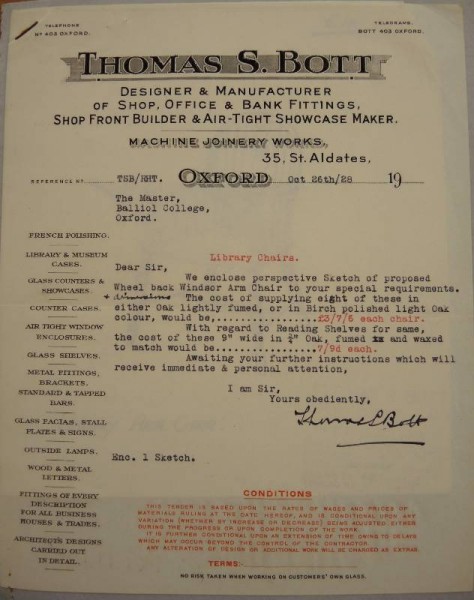
Balliol College: quote for library chairs (1928) by Thomas S. Bott, 35 St Aldates ( Balliol Archives)

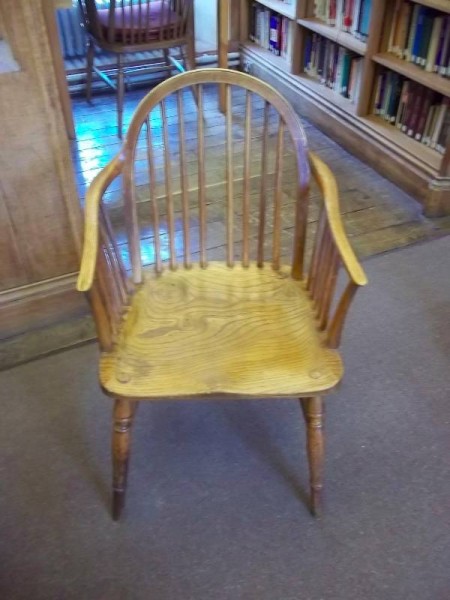
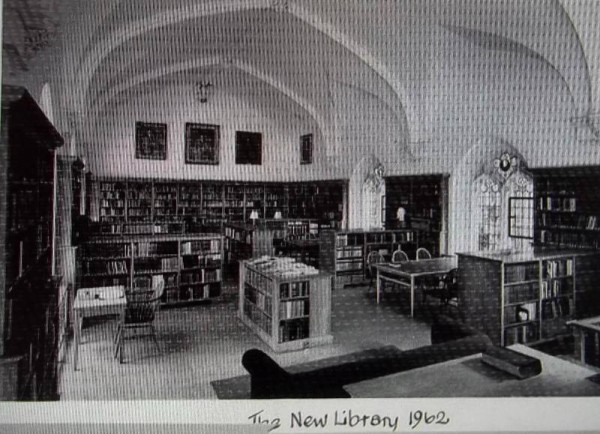
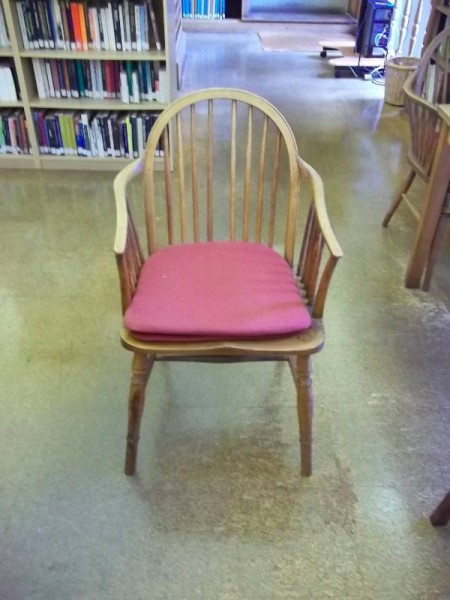
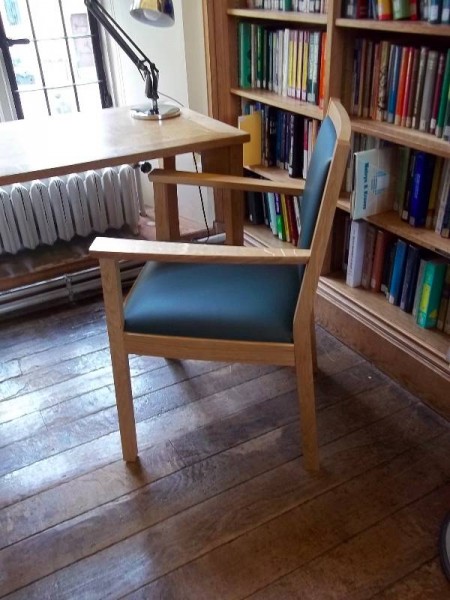
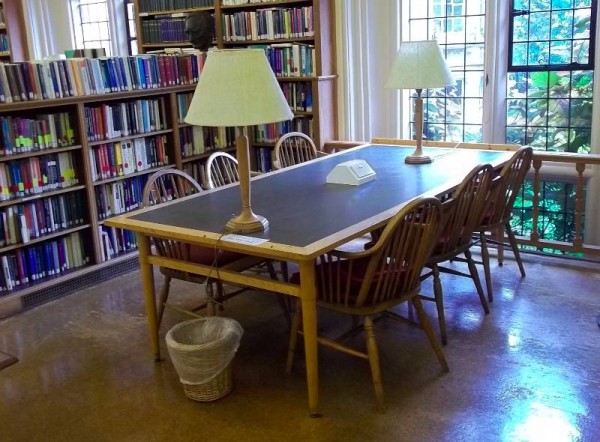
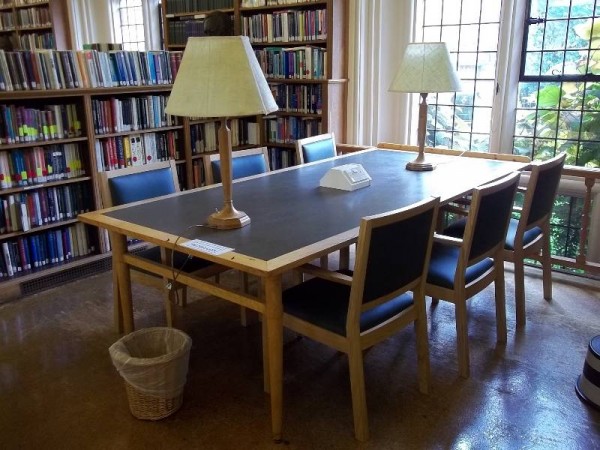
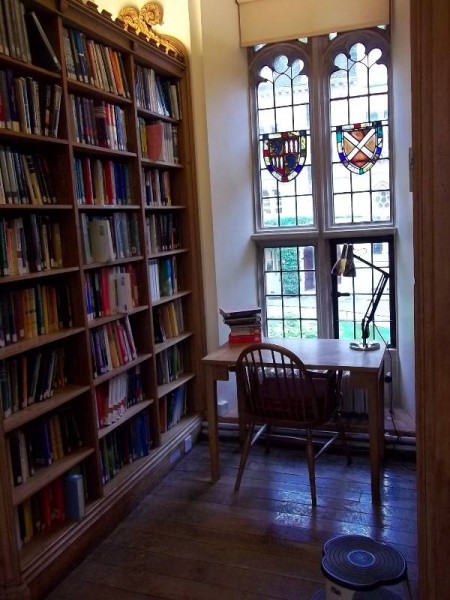
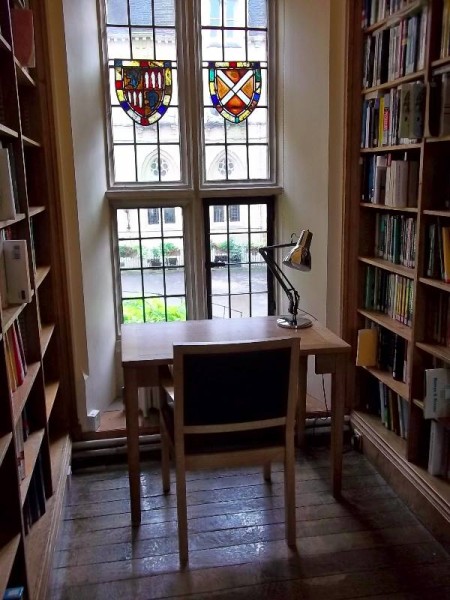
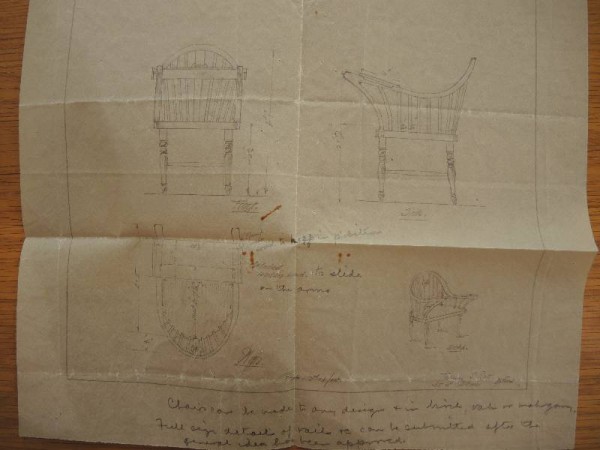
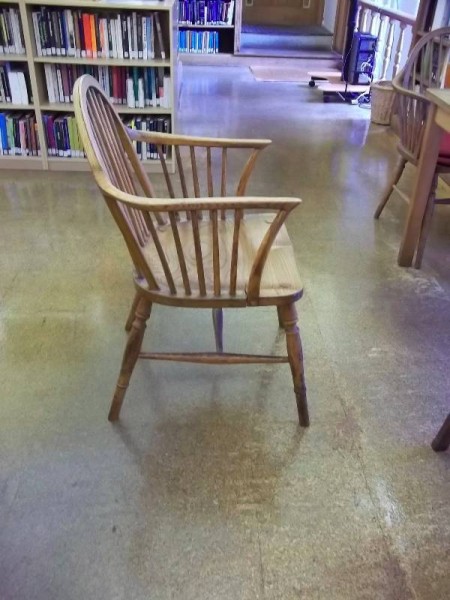
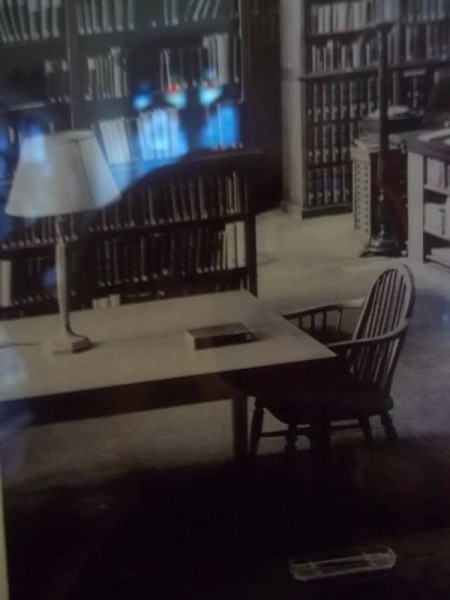
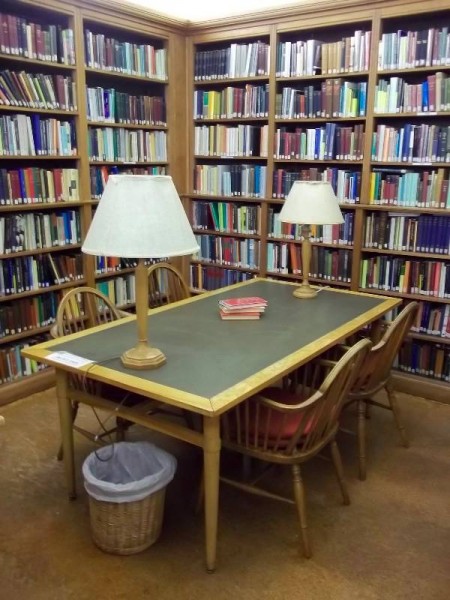
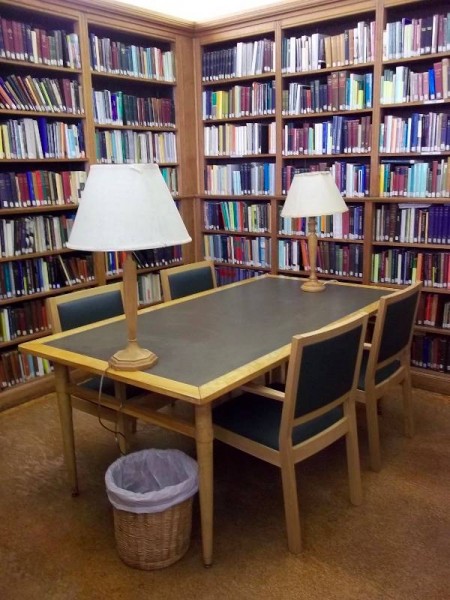
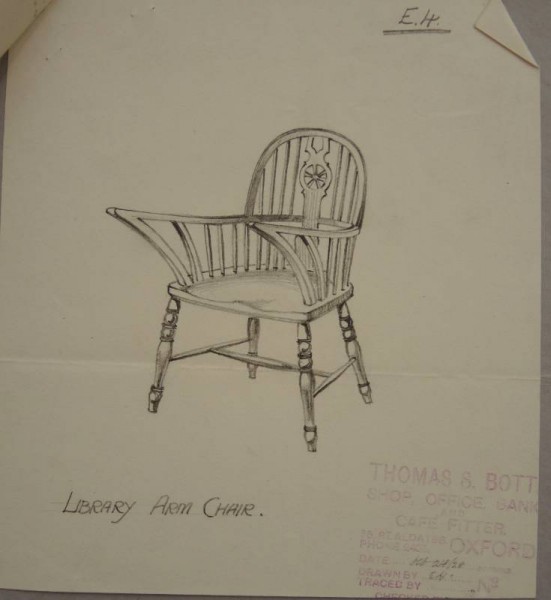
11 Comments
Change is hard. When I started reading your post, I thought “oh no!”
But the new chairs fit right in. They look really good with the tables. They are more modern than the old ones, but not in a jarring way. And — comfort is really a necessary virtue of a chair, in my view. My compliments to those who chose the new chairs. They did a fine job.
I wonder if Peter Wimsey sat in the old chairs, when he went back for a reunion or two? 🙂 I can’t imagine him visiting Baliol without stopping into the library…………
Vicki,
Thank you for you reassuring comments about the chairs.
Peter Wimsey was born in 1890, so would have been at Balliol before the chairs made their first appearance in the library, although he would have been familiar with many other library fittings, including most of the bookcases. I believe there is a portrait of him in the Buttery, but I have yet to see it.
What happened to the old chairs? Were they sold or thrown away?
I’d really like a reproduction Bodleian library chair – but they cost £750 so I’ve not been able to justify that amount for a chair up to now
Nicola,
We shall be selling the old library chairs but as yet no decision has been made as to when and how. Many are still in good condition and, given their provenance, they will probably be much sought after. I am not sure how these things work but it may be that any money received could go towards the financing of the new ones – but I have no authority for saying this. Any price will take such things into account. I will keep you informed.
Mary
I think it’d be a great fund raiser for the College to sell or auction the old chairs. I’ll start the bidding at 100 pounds!
Chris,
We will be selling the chairs – but not yet. I think we might start a bit higher than £100! I’ll let you know when anything has been decided.
with best wishes,
Mary
I would love to buy a chair, so please put me on the list when you decide what to do with them!
Added to list.
I would love an old chair – do let me know how to buy/bid for one!
Added to list.
2 Trackbacks
[…] post was originally published by Mary Addison on 16 November 2013 at http://www.addisonembroideryatthevicarage.co.uk/2013/11/16/farewell-to-the-library-chairs/, and is reposted here with the author’s kind […]
[…] with the library chairs, the origin of the lamps is equally mystifying. A photo of the Reading Room before its rebuilding […]